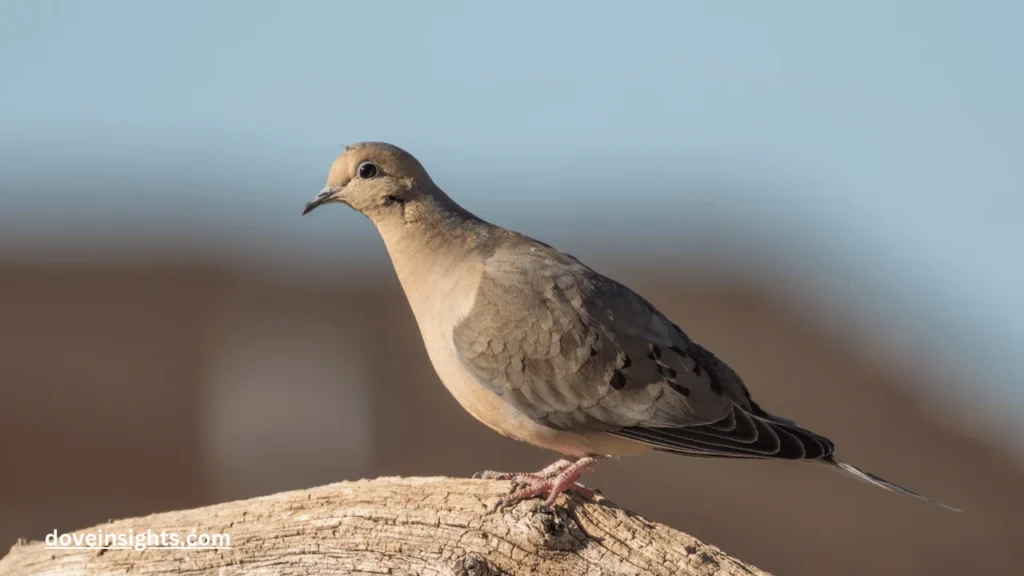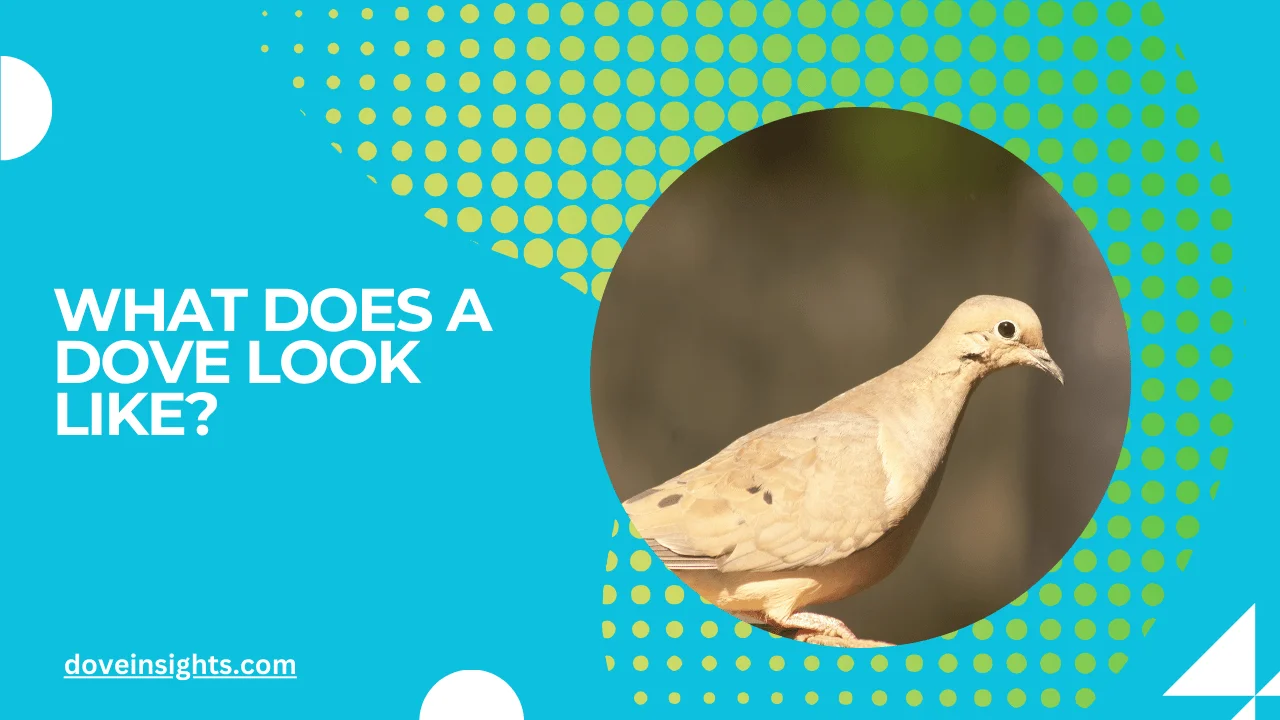Doves have long been symbols of peace, love, and hope, often portrayed in art and literature as gentle, white creatures gliding through the sky.
But have you ever wondered what a dove actually looks like beyond these symbolic representations? While doves are commonly associated with a pure white color, the truth is, they come in a variety of shapes, sizes, and colors. From their slender bodies to their graceful wings, these birds have distinct features that set them apart from other avian species.
This article delves into the physical characteristics of doves, providing an in-depth look at what makes them unique and why their appearance is more diverse than many might think.
Contents
The General Appearance of a Dove
When we think of doves, we often imagine a bird with soft, white feathers and a gentle demeanor. However, doves come in a wide range of colors, from white and gray to brown and even speckled varieties.
Most doves have slender, graceful bodies with smooth contours that help them glide effortlessly through the air. Their size typically ranges from small to medium, with a wingspan that can extend up to 28 inches, depending on the species.
The head of a dove is often slightly rounded with a gentle, tapered beak that’s well-suited for feeding on seeds and small fruits.
Their eyes are dark and keen, giving them an alert expression. But what truly distinguishes a dove is its long, pointed tail that enhances its aerodynamic abilities, allowing for graceful flight patterns. Whether perched on a branch or soaring through the sky, doves exude a sense of calm elegance.
Color Variations Across Dove Species
While the classic image of a dove is pure white, many species feature a variety of colors and patterns that are equally stunning.
The most common dove species, the mourning dove, has a soft grayish-brown body with faint, pale streaks on the wings and a characteristic black crescent on the side of its neck. This gives the mourning dove a more subdued, natural look compared to its more idealized white counterparts.
Other species, like the diamond dove or the Zenaida dove, sport colors ranging from delicate grays to rich browns.
The white-winged dove, on the other hand, has a more noticeable contrast with its white wing patches and darker, earthy-toned body.
The variations in color not only help doves blend into their environments for protection but also reflect the specific habitats they occupy, whether in dense forests, open fields, or urban settings.
Physical Characteristics of Dove Wings and Tail
Doves are known for their elegant wings, which are a key feature in their ability to fly with grace and agility. Their wings are long, narrow, and pointed, providing the lift and speed necessary for their aerial lifestyle.
These wings allow doves to take short flights with fast, steady beats before coasting smoothly through the air. Their flight pattern often appears effortless, a testament to the specialized structure of their wings.
The tail of a dove is another significant physical trait. Typically long and pointed, the tail aids in steering during flight, helping doves navigate the air with precision.
The tail feathers can also be used as a visual marker during mating displays or territorial defense. Interestingly, the tail can sometimes have subtle color variations, such as lighter edges, that can make the dove’s profile even more distinctive.
Dove Beaks, Feet, and Other Unique Features
A dove’s beak is short and conical, designed to efficiently pick up seeds, grains, and small fruits. Unlike other birds with more specialized beaks for insect hunting or scavenging, doves have adapted to a diet primarily consisting of plant matter.
Their feet are small and somewhat unremarkable, with three forward-pointing toes and one backward-facing toe that help them grip tree branches or the ground.
Though doves are best known for their soft, peaceful cooing, they are also capable of producing a variety of sounds, such as whistles and chirps, which are produced by their syrinx, an organ at the base of the trachea.
These vocalizations serve many purposes, from communication between mates to warning other birds of danger. A dove’s ability to communicate through sound adds another layer to its unique physical attributes.
The Significance of Dove Appearance in Culture and Symbolism

Doves have been symbols of peace, freedom, and love for centuries, and their physical appearance often plays into this cultural representation.
The classic white dove is often seen in religious contexts, particularly in Christianity, where it represents the Holy Spirit. Their graceful flight and serene features have led to their association with tranquility and harmony.
The diverse appearances of doves across species, however, remind us that these birds are not just symbolic but also biologically diverse.
Whether it’s the subtle color patterns of a mourning dove or the striking markings of the Eurasian collared dove, each species has unique characteristics that contribute to its beauty and ecological role.
Understanding their appearance in detail enhances our appreciation of doves not only as cultural symbols but also as remarkable creatures in their own right.
Conclusion
Doves are much more than the symbols of peace they are often made out to be. From their slender bodies to their aerodynamic wings and colorful plumage, doves exhibit a range of physical features that make them distinct from other bird species.
While the image of a pure white dove might be the most familiar, the reality is that doves come in many forms, each with unique characteristics that are a testament to their adaptation and diversity in nature.
By exploring the features that define what a dove looks like, we gain a deeper appreciation for these beautiful birds and their significance in both the natural world and human culture.
FAQ’s
What color are doves typically?
Doves can come in a variety of colors, including white, gray, brown, and even speckled. The most common species, like the mourning dove, have a soft grayish-brown color.
What is the size of a dove?
Doves are medium-sized birds, typically measuring between 12 and 13 inches in length, with wingspans ranging from 24 to 28 inches.
Do all doves have white feathers?
No, not all doves are white. Many species, such as the mourning dove, have grayish or brown feathers with subtle patterns.
What is the tail of a dove like?
Doves have long, pointed tails that help them steer while flying. The tail feathers may have lighter edges, adding to their visual appeal.
Are doves good at flying?
Yes, doves are skilled flyers. Their long, narrow wings allow for fast, steady flights and smooth gliding.
What do doves eat?
Doves primarily eat seeds, grains, and small fruits. Their beaks are short and conical, designed to handle plant matter.








